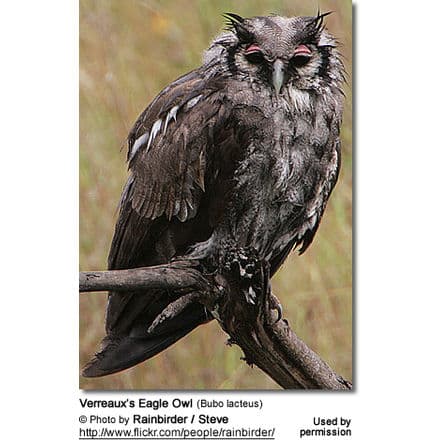Backyard Birds
Species of Bulbuls – Pycnonotidae
Species of Bulbuls – Pycnonotidae
Basal
- Genus Calyptocichla
- Golden Greenbul, Calyptocichla serina : Found in the forests in West Africa and the Democratic Republic of the Congo, where it is common. It is brightly colored for a greenbul due to its bright yellow belly and white throat; otherwise it is not particularly distinct in plumage, with unmarked olive upperparts, tail and wings. It has a long slender pinkish-brown bill, a feature not shared by other greenbuls.
Typical bulbuls
- Genus Pycnonotus – paraphyletic (= some, but not all, of the descendants from a common ancestor)ts natural habitats are subtropical or tropical moist lowland forests and moist montanes.
- Genus Spizixos
- Crested Finchbill, Spizixos canifrons : Found in Bangladesh, China, India, Laos, Burma, Thailand, and Vietnam.
- Collared Finchbill, Spizixos semitorques
- Genus Phyllastrephus
- Cabanis’s Greenbul, Phyllastrephus cabanisi
- Fischer’s Greenbul, Phyllastrephus fischeri
- Terrestrial Brownbul, Phyllastrephus terrestris
- Northern Brownbul, Phyllastrephus strepitans
- Pale-olive Greenbul, Phyllastrephus fulviventris
- Grey-olive Greenbul, Phyllastrephus cerviniventris
- Baumann’s Olive Greenbul, Phyllastrephus baumanni
- Toro Olive Greenbul, Phyllastrephus hypochloris
- Cameroon Olive Greenbul, Phyllastrephus poensis
- Grey-headed Greenbul, Phyllastrephus poliocephalus
- Yellow-streaked Greenbul, Phyllastrephus flavostriatus
- Lowland Tiny Greenbul, Phyllastrephus debilis
- Montane Tiny Greenbul, Phyllastrephus albigula
- White-throated Greenbul, Phyllastrephus albigularis
- Icterine Greenbul, Phyllastrephus icterinus
- Sassi’s Olive Greenbul, Phyllastrephus lorenzi
- Liberian Greenbul, Phyllastrephus leucolepis
- Genus Tricholestes
- Hairy-backed Bulbul, Tricholestes criniger : Found in Brunei, Indonesia, Malaysia, Burma, and Thailand. This bird species inhabits subtropical or tropical moist lowland forests.
- Genus Setornis
- Hook-billed Bulbul, Setornis criniger : Found in Brunei, Indonesia, and Malaysia. Its natural habitats are subtropical or tropical moist lowland forests and subtropical or tropical swamps. The continued existence of this species is threatened by habitat destruction.
- Genus Alophoixus – formerly included in Criniger, possibly polyphyletic (derived from more than one ancestral type)
- Finsch’s Bulbul, Alophoixus finschii : Found in Brunei, Indonesia, Malaysia, and Thailand. Inhabitssubtropical or tropical moist lowland forests. The continued existence of this species is threatened by habitat destruction.
- White-throated Bulbul, Alophoixus flaveolus
- Puff-throated Bulbul, Alophoixus pallidus : Found in Cambodia, China, Laos, Burma, Thailand, and Vietnam. This bird species inhabits subtropical or tropical moist lowland forests.
- Ochraceous Bulbul, Alophoixus ochraceus : Found in Brunei, Cambodia, Indonesia, Malaysia, Burma, Thailand, and Vietnam. Its natural habitats are subtropical or tropical moist lowland forests and moist montanes.
- Gray-cheeked Bulbul, Alophoixus bres : Found in Brunei, Indonesia, Malaysia, Burma, the Philippines, and Thailand. Its natural habitats are subtropical or tropical moist lowland forests and moist montanes.
- Yellow-bellied Bulbul, Alophoixus phaeocephalus : Found in Brunei, Indonesia, Malaysia, Burma, Singapore, and Thailand. This bird species inhabits subtropical or tropical moist lowland forests.
- Golden Bulbul, Alophoixus affinis : Endemic to Indonesia. Inhabitssubtropical or tropical moist lowland forests.
- Genus Iole
- Olive Bulbul, Iole virescens : Found in Bangladesh, India, Burma, and Thailand. Its natural habitats are subtropical or tropical moist lowland forests and moist montanes.
- Grey-eyed Bulbul, Iole propinqua : Found in Cambodia, China, Laos, Burma, Thailand, and Vietnam. This bird species inhabits subtropical or tropical moist lowland forests.
- Buff-vented Bulbul, Iole olivacea
- Yellow-browed Bulbul, Iole indica : Found in the hills of Sri Lanka and the Western Ghats of India and in small pockets of the Eastern Ghats of India. CallsThis is a bird of moist secondary growth. Despite its restricted range, it is quite readily found at sites such as Kitulgala and Sinharaja in Sri Lanka and the Western Ghats. It builds its platform nest low in a tree; two or three eggs is a typical clutch. The Yellow-browed Bulbul is about 20cm (7 inches) in length, with a long tail. It has olive upperparts and bright yellow underparts. The dark bill and eye contrast with the yellow around the eye. Males and females look alike in plumage, but young birds are duller than adults, especially on the face and flanks. The flight is bouncing and woodpecker-like. Yellow-browed Bulbuls feed on fruit and insects.
- Genus Hemixos
- Ashy Bulbul, Hemixos flavalaL Found in Bangladesh, Bhutan, Cambodia, China, India, Indonesia, Laos, Malaysia, Burma, Nepal, Singapore, Thailand, and Vietnam. Its natural habitats are subtropical or tropical moist lowland forests and moist montanes.
- Chestnut Bulbul, Hemixos castanonotus
- Genus Ixos – paraphyletic (= some, but not all, of the descendants from a common ancestor)
- Streaked Bulbul, Ixos malaccensis : Found in Brunei, Indonesia, Malaysia, Burma, Singapore, and Thailand. Inhabitssubtropical or tropical moist lowland forests. The continued existence of this species is threatened by habitat destruction.
- Sulphur-bellied Bulbul, Ixos palawanensis – Hypsipetes? : Endemic to the Philippines. This bird species inhabits subtropical or tropical moist lowland forests.
- Streak-breasted Bulbul, Ixos siquijorensis – Hypsipetes? : Endemic to the Philippines. Inhabits subtropical or tropical moist lowland forests and moist shrubland. The continued existence of this species is threatened by habitat destruction.
- Yellowish Bulbul, Ixos everetti : Endemic to the Philippines. Inhabits subtropical or tropical moist lowland forests.
- Zamboanga Bulbul, Ixos rufigularis: Endemic to the Philippines. Inhabitssubtropical or tropical moist lowland forests. The continued existence of this species is threatened by habitat destruction.
- Mountain Bulbul, Ixos mcclellandii
- Sunda Bulbul, Ixos virescens: Endemic to Indonesia where it occurs on Sumatra and Java. This bird species inhabits subtropical or tropical moist montane forests.
- Genus Microscelis
- Brown-eared Bulbul, Microscelis amaurotis (sometimes included in Ixos)
- Genus Hypsipetes
- Philippine Bulbul, Hypsipetes philippinus – formerly in Ixos : Endemic to the Philippines. Its natural habitats are subtropical or tropical moist lowland forests and moist montanes.
- Madagascar Bulbul, Hypsipetes madagascariensis
- Black Bulbul, Hypsipetes leucocephalus
- Seychelles Bulbul, Hypsipetes crassirostris
- Comoro Bulbul, Hypsipetes parvirostris: Found in Comoros and Mayotte. This bird species inhabits subtropical or tropical moist montanes.
- Reunion Bulbul, Hypsipetes borbonicus : Also known as Olivaceous Bulbul. Endemic to Réunion. It looks similar to the Mauritius Bulbul but with 22 cm it is slightly smaller. It is ashy gray with a blackish crest. The iris is conspicuous white. Bill and feet have an orange hue. Its diet is primarily frugivorous. Especially in February and March it comes from higher elevations where it inhabits second growth moist forests to the valleys and feeds on the ripe guavas. Nectar, insects and small lizards enrich its range of food. The female lays two eggs in a cup-shaped nest during the southern summer.
- Mauritius Bulbul, Hypsipetes olivaceus : Also known as Mauritius Black Bulbul. Endemic to Mauritius. It can reach a size up to 24 cm. It is characterized by bright yellow-brown eyes, pink legs, and an orange to yellow hued bill. Its plumage is generally greyish contrasted with a black crest. Its diet consists of insects, seeds, and fruits. Especially the ripe berries of Lantana camara are favoured. During the southern summer the female lays two pinkish eggs in a nest consisting of straw and roots. The incubation lasts between 14 and 16 days. The plumage of the juveniles is pale brown. Their bill is blackish. In earlier times it was often a dish on festive days. In the mid-1970s only 200 pairs have survived due to the replacement of their forested habitats by tea plantations, the hunting by introduced macaques and the decline of their host plants due to the competition of invasive plants. Today it is regarded as rare on a stable level. 280 pairs were counted in 1993.
- Nicobar Bulbul, Hypsipetes virescens: Endemic to India. Its natural habitats are subtropical or tropical moist lowland forests, plantations, rural gardens, and urban areas. The continued existence of this species is threatened by habitat destruction.
- White-headed Bulbul, Hypsipetes thompsoni: Found in Burma, Thailand, and Vietnam. Its natural habitats are subtropical or tropical moist lowland forests and moist montanes.




